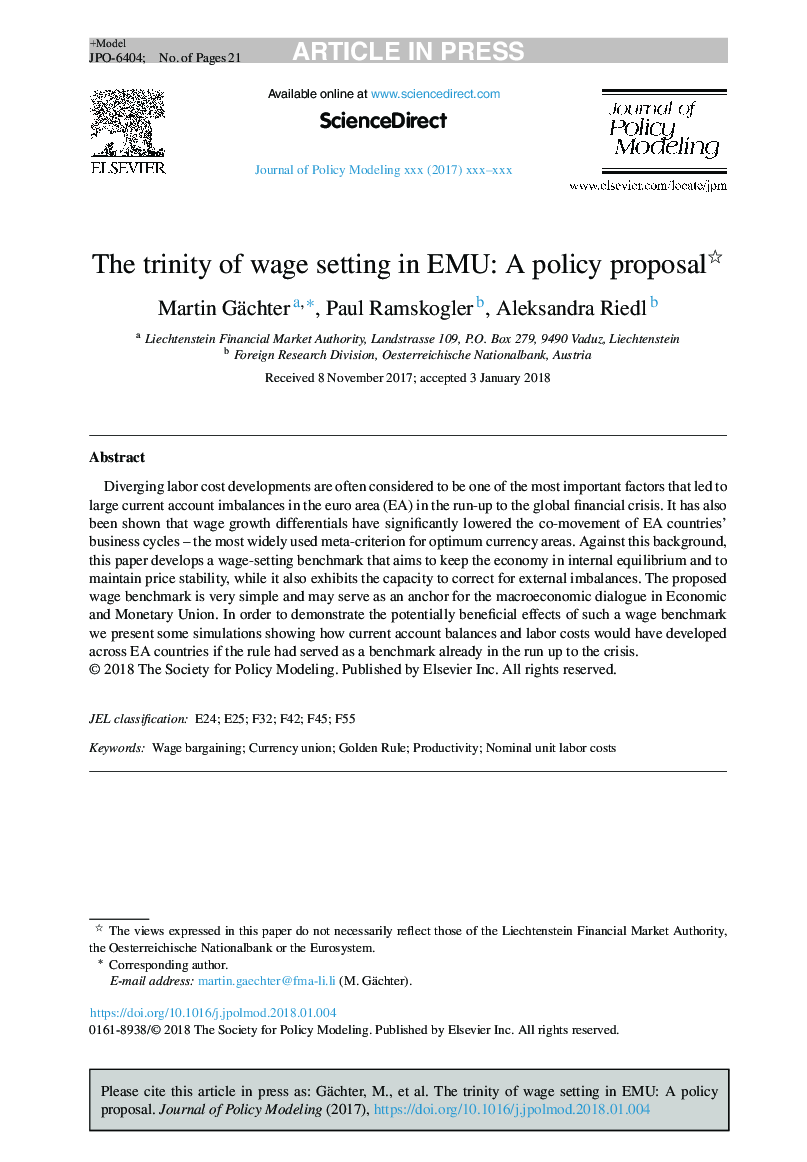| Article ID | Journal | Published Year | Pages | File Type |
|---|---|---|---|---|
| 7369063 | Journal of Policy Modeling | 2018 | 21 Pages |
Abstract
Diverging labor cost developments are often considered to be one of the most important factors that led to large current account imbalances in the euro area (EA) in the run-up to the global financial crisis. It has also been shown that wage growth differentials have significantly lowered the co-movement of EA countries' business cycles - the most widely used meta-criterion for optimum currency areas. Against this background, this paper develops a wage-setting benchmark that aims to keep the economy in internal equilibrium and to maintain price stability, while it also exhibits the capacity to correct for external imbalances. The proposed wage benchmark is very simple and may serve as an anchor for the macroeconomic dialogue in Economic and Monetary Union. In order to demonstrate the potentially beneficial effects of such a wage benchmark we present some simulations showing how current account balances and labor costs would have developed across EA countries if the rule had served as a benchmark already in the run up to the crisis.
Related Topics
Social Sciences and Humanities
Economics, Econometrics and Finance
Economics and Econometrics
Authors
Martin Gächter, Paul Ramskogler, Aleksandra Riedl,
